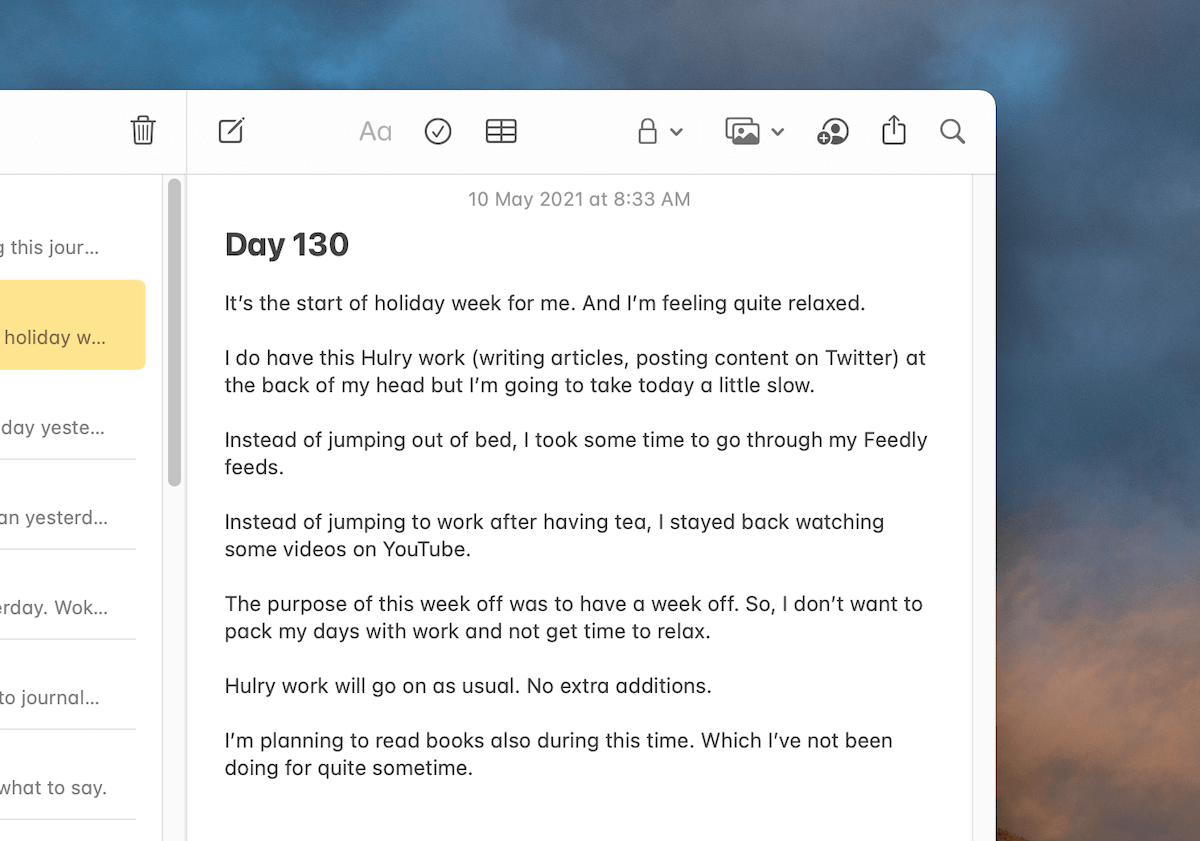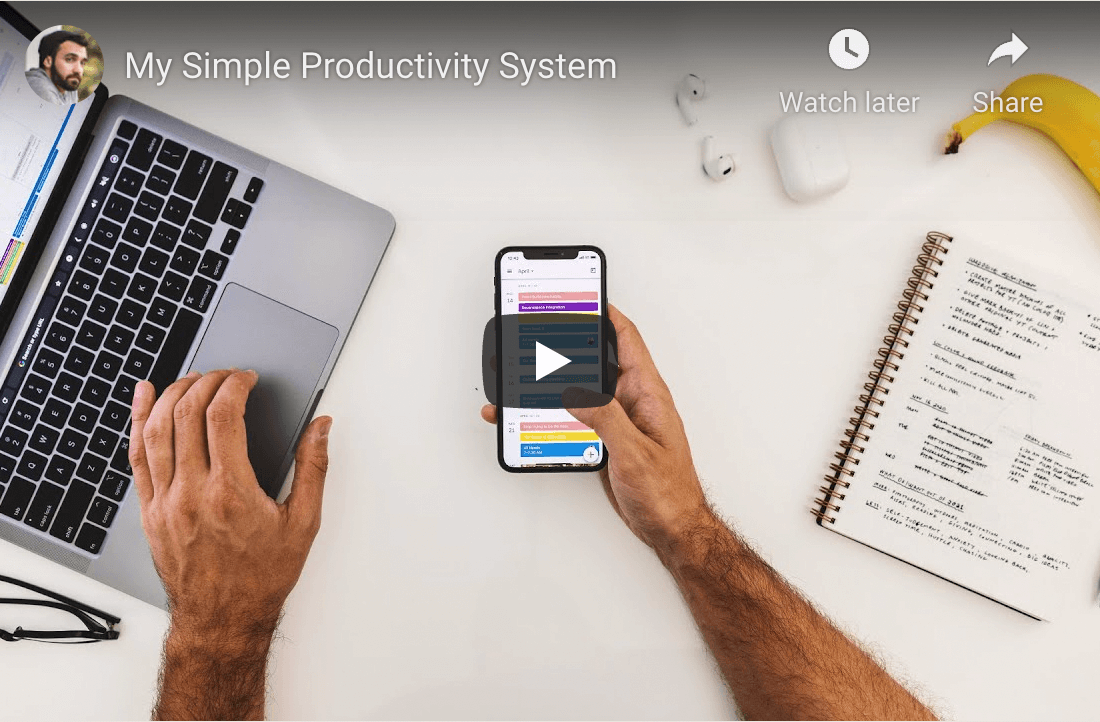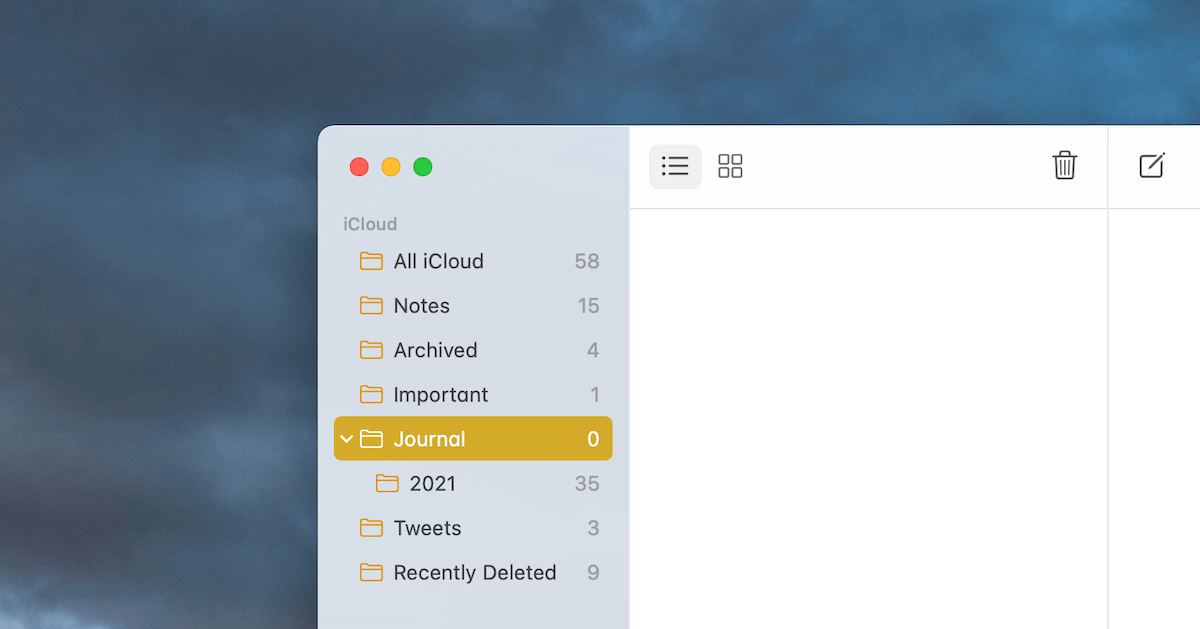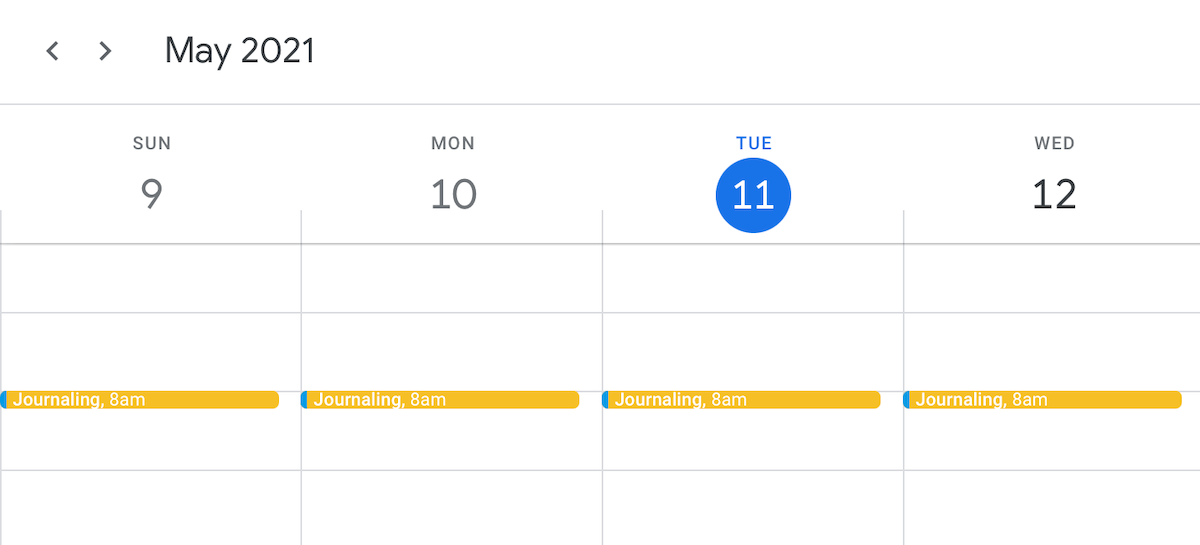I’ve been trying to get myself to journal for years now.
Sold on the benefits of journaling, I gave it a shot multiple times in the past — probably 4–5 times.
But the problem was:
I could never stick to this practice for more than a week. I would give up days after picking up the habit.
Recently, though:
After a conversation with a friend, who writes journals every day, I thought to give it one more try.
In this post, I’ll talk about how I got from giving up journaling multiple times to adopting a journaling approach that helped me write entries every day for the past 35 days.
Let’s start with:
My past experience in writing journals
Almost every self-improvement gurus out there talk about how keeping a daily journal has dramatically made their lives better.
Naturally:
Sold by the idea that most influencers were bouncing on the internet, I talked myself into journaling.
Only to fail, that is.
I couldn’t get myself to write journals for more than a couple of days. It felt like another chore on my to-do list.
While I was convinced by the fact that journaling improves our lives, I lacked the execution idea.
I tried to copy what others were doing:
- Bullet journaling
- Plus Minus Next journaling
- And more
The problem was that we are different individuals.
What has worked for someone else might not work for me.
So:
What others thought was enjoyable work, I saw journaling as a useless task I’m forcing myself to do every day.
And I suppose you might have felt this way too, with either journaling or any other life-changing habit.
The rules of different journaling techniques made the activity more of a work than fun.
So, this time:
I thought to try something different.
The only rule is that there are no rules
A month ago, when I started journaling again, I decided to follow a free thought journaling approach.
The idea is essentially this:
I write whatever’s in my mind.
No guidelines. No bullet points to fill. No columns to draw.
Raw thoughts transferred from my head to a digital paper.
If you look at my journal entries, it’ll be challenging to find a pattern.
Some days I rant and get a load off my mind.
Some days I talk about how I’m feeling at that moment.
Some days I talk excitedly about a new idea or things that I plan to do for the day.
Here’s an entry from my archives to give you an example:

Also:
Nothing is off-limits for my journals. Since these are private entries, I write just about anything.
After journaling for a couple of days, I realised that this was the missing ingredient in my past journaling attempts:
Following rules and not letting my mind and fingers run free.
We’re more likely to stick to a habit if it’s fun and engaging than one that feels more like work.
I made journaling fun and relaxing. That’s why I’m able to stick to it.
Now:
Before I move on to my daily journaling method, here’s:
How journaling has left a positive impact on my life
The best thing about writing journals is that every time I do it, my mind feels at ease.
Our minds are bombarded with thoughts all day long, and jotting down the thoughts that bother me the most takes my mind off them.
I get closure.
Also:
Typing out my thoughts makes me more aware of how I’m feeling.
For example:
When I feel stressed with work and write about it in my journal, I acknowledge the stress and see if I can alleviate the problem.
Most times, I take a few deep breaths and focus on the things I can control.
Practising this for a couple of days has made anxiety visit me less.
Now:
Another valuable aspect of journaling is having a retrospective.
Although it’s too early to go through my journal entries and look back at my decisions, the future me will be grateful for this habit.
The significant moments and decisions noted in an accessible manner is a treasure trove for self-improvement.
Six months from now, I can revisit my past journal entries and see:
- What were the good and the bad decisions
- When did I feel the happiest
- What caused me anxiety
Armed with this knowledge, I can plan my next six months better.
So:
Now that we’ve talked about the merits of journaling, here’s:
How I log journal entries every day
Many people use a good old notebook and a pen to jot down their thoughts.
I want my thoughts to be accessible whenever I need them.
For this, my phone was the best choice.
Now:
Given the app-nerd that I’m, my first choice for storing journal entries was Day One.
I’ve heard praises of this app on too many occasions from friends and people online.
However:
This app works on a subscription model.
Before putting down my credit card number, I asked myself this, “Do I need another subscription?”
You see, although an individual subscription might seem affordable and even cheap, hoarding many of them will drain a significant amount of money from your bank.
Inspired by Matt D’Avella’s simple productivity system, I fell back to exploring free alternatives for this job.

And Apple Notes caught my attention.
Since I use an iPhone and a MacBook, Apple Notes is a great choice to write down my journal entries.
Accessible everywhere and always synced via iCloud.
Now:
Apple Notes is a general note-taking app. This means that it doesn’t offer a fancy day-by-day view that most journaling apps provide.
To solve this issue, I created a folder in Apple Notes called “Journal”:

In that folder, I created a subfolder named with the current year — 2021.
And the subfolder is where I store my journal entries titled with the day of the year, like this:

Now:
There’s no rule that you have to follow this structure or title your journal entries with the day of the year.
It works for me and will help me refer to my notes without too much digging.
Use whatever works for you.
Now, here’s another point to note:
Every new habit needs some time and effort to start rolling on its own and becoming muscle memory.
So, here’s:
How I made journaling a habit
Every habit needs a trigger.
I used James Clear’s habit stacking method to engrave a trigger of writing a journal entry right after my morning tea.
Having a cup of tea every morning was something I was already doing — an established habit.
So, piggybacking on the success of my existing habit made it easier to stick to my new practice — journaling.
To make sure I don’t forget to write my journal entry, I’ve set up a 15 mins daily time block on my calendar, like this:

After a month of journaling, I don’t need a calendar event to remind me. However, having time carved out of my schedule helps me stick to the habit.
Now:
Although writing a journal every day is what we’re looking for, there will be days where you’ll miss.
That’s okay.
Don’t beat yourself up for it, and have a flexible consistency mindset.
If you miss a day, no big deal, write an entry tomorrow.
As long as you’re not giving up the habit for good, it’s okay to miss your streak occasionally.
No pressure, no rules, remember? Enjoy the process.
So:
Should you try journaling?
If you hadn’t tried journaling before or failed to stick to it like me, give it another go.
Follow the free thought journaling method to write down what you feel at the moment.
No fill in the blanks. No word count to meet.
Write what’s in your head and close the loop on your thoughts.
Don’t hold yourself back thinking you’ll need a fancy app like Day One to start journaling. Use any plain-old notes app to get the job done.
And most importantly, make journaling a habit and give it a fair chance before you call it quits.
It might change your life.



 In-depth articles, series and guides
In-depth articles, series and guides
